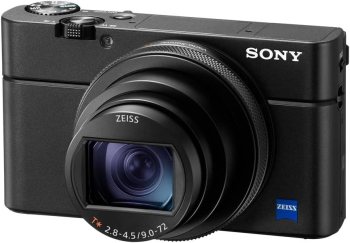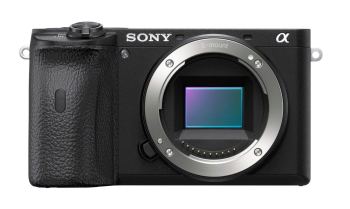- Compact and lightweight
- Excellent image quality
- Fast autofocus
- Excellent autofocus
- In-body stabilization
- Long battery life
- Limited battery life
- Small control buttons
- No headphone jack
- Limited lens selection
- Complex menu system
- No built-in flash
Sony Cyber-shot RX100 VII vs Sony Alpha 6600
When it comes to high-quality photography, Sony digital cameras are among the most popular choices among enthusiasts and professionals alike. Two notable models from Sony's lineup are the Sony Cyber-shot RX100 VII and the Sony Alpha 6600. While both cameras offer exceptional image quality and advanced features, they cater to different needs and preferences. In this comparison, we'll delve into the key differences and similarities between these two models to help you decide which one is best for your photography requirements.
Sensor Size and Type
The most significant difference between the Sony Cyber-shot RX100 VII and the Sony Alpha 6600 lies in their sensor size and type. The RX100 VII features a 1-inch, 20.1-megapixel Exmor RS CMOS sensor, which is ideal for compact cameras. In contrast, the Alpha 6600 boasts an APS-C, 24.2-megapixel Exmor CMOS sensor, providing better low-light performance and shallower depth of field.
Lens and Zoom
The Sony Cyber-shot RX100 VII has a fixed lens with a 24-200mm (equivalent) zoom range, making it suitable for everyday photography, travel, and street shooting. The lens also features a fast aperture of f/1.8-2.8, allowing for excellent low-light performance and creamy bokeh.
On the other hand, the Sony Alpha 6600 is an interchangeable lens camera, which means you can use various E-mount lenses to suit your needs. While it doesn't come with a kit lens, you can pair it with a range of zoom lenses, such as the Sony E 16-50mm f/3.5-5.6 OSS or the Sony E 18-135mm f/3.5-5.6 OSS.
Autofocus and Burst Mode
Both cameras feature advanced autofocus systems, but the Sony Alpha 6600 has a more sophisticated system with 425 phase-detection points, covering approximately 84% of the image area. This results in faster and more accurate subject tracking, making it ideal for sports, wildlife, and action photography.
The RX100 VII also boasts an impressive autofocus system with 357 phase-detection points, but its coverage is limited to about 68% of the image area. However, it makes up for this with its exceptional burst mode capabilities, shooting up to 20 frames per second (fps) in continuous AF mode.
Video Capabilities
Both cameras are capable of recording high-quality video, but the Sony Alpha 6600 has an edge when it comes to resolution and frame rates. It can shoot 4K video at up to 30p, while the RX100 VII tops out at 4K 30p as well, but with a 1.2x crop factor.
Design and Ergonomics
The Sony Cyber-shot RX100 VII is designed for compactness and portability, weighing in at just 302 grams. Its small size makes it easy to slip into a pocket or purse, perfect for travel and everyday carry.
In contrast, the Sony Alpha 6600 has a more substantial build, weighing around 503 grams, and features a larger grip and more pronounced controls. This design provides a more comfortable shooting experience, especially for those with larger hands.
Price
The price difference between these two cameras is significant. The Sony Cyber-shot RX100 VII typically retails for around $1,300, while the Sony Alpha 6600 body-only costs around $1,400. However, when you factor in the cost of lenses for the Alpha 6600, the total price can quickly add up.
Conclusion
In conclusion, both the Sony Cyber-shot RX100 VII and the Sony Alpha 6600 are excellent choices among Sony digital cameras, but they cater to different needs and preferences. The RX100 VII is ideal for those seeking a compact, point-and-shoot camera with exceptional image quality and advanced features. On the other hand, the Alpha 6600 is better suited for enthusiasts and professionals who require more manual control, interchangeable lenses, and superior autofocus performance.
Ultimately, the decision between these two cameras depends on your specific photography requirements, budget, and personal preferences. If you value compactness and ease of use, the RX100 VII might be the better choice. However, if you're looking for a more advanced camera with greater creative control, the Sony Alpha 6600 is definitely worth considering.































